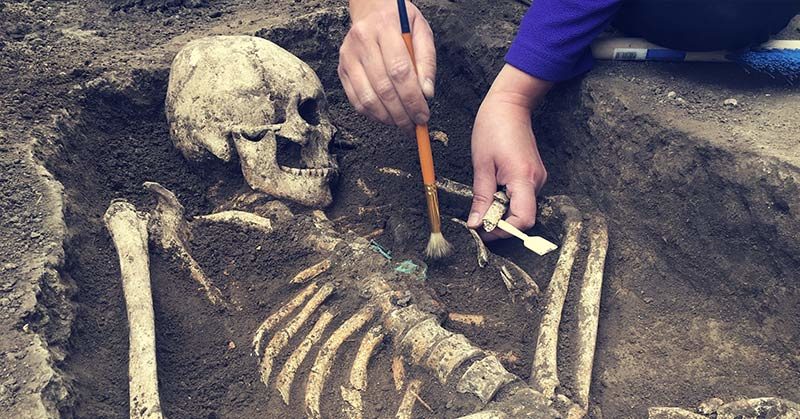When you think of Vikings, what do you picture? Burly, bearded men? Strong blond-haired, blue-eyed people that look like Thor? New genetic discoveries are now showing that Vikings may have been more ethnically diverse than we originally thought.
New DNA Changes What We Know About Vikings
The largest-ever genetic study done on Vikings was published last week in the journal Nature. The 6-year-long study involved genetic testing of 442 human remains of men, women, and children that date back to between 2400 BC and 1600 AD. (1)
The researchers compared the DNA to 3,855 present-day people from the UK, Denmark, and Sweden, as well as with data from 1,118 ancient individuals. The results show much more intermixing of genetic material than they first thought. (1)
“We have this image of well-connected Vikings mixing with each other, trading and going on raiding parties to fight Kings across Europe because this is what we see on television and read in books — but genetically we have shown for the first time that it wasn’t that kind of world,” explains lead author and director of The Lundbeck Foundation GeoGenetics Centre at the University of Copenhagen Eske Willerslev. “This study changes the perception of who a Viking actually was — no one could have predicted these significant gene flows into Scandinavia from Southern Europe and Asia happened before and during the Viking Age.” (1)
The researchers also found that people who are not genetically related to Vikings sometimes still received traditional Viking burials. This suggests that being a Viking was more about a sense of identity than it was about family roots. (1)
What This Changes
First of all, the image of a blond, blue-eyed Viking isn’t necessarily how they all looked. Findings that tie many of them to Southern Europe will have certainly had an effect on their appearance. (1)
They found Viking DNA in many unexpected places, including (1):
- Ancient Danish Viking DNA in England
- Norweigan Viking DNA in Ireland, Iceland, and Greenland
- DNA similar to present-day Swedish populations in the Western Edge of Europe
- DNA similar to the modern Danish further East
Their analysis also shows that this DNA mixing was happening even before the Viking Age.
“We found that Vikings weren’t just Scandinavians in their genetic ancestry, as we analyzed genetic influences in their DNA from Southern Europe and Asia which has never been contemplated before,” said Martin Sikora, a lead author on the study and associate professor at the Centre for GeoGenetics, University of Copenhagen. “Many Vikings have high levels of non-Scandinavian ancestry, both within and outside Scandinavia, which suggest ongoing gene flow across Europe.” (1)
There were also several people buried in the traditional Viking style with no genetic connection to the Vikings at all. Some of them were Pictish, which refers to the early Irish and Scottish people. (1)
What This Means for Science
Though the history books will need to be updated, history isn’t the only area of study that this research changes. (1)
This new insight into genetics helps scientists better understand how different genetic traits are selected for across genetic groups. (1) These traits include (1):
- Metabolism
- Immunity
- Pigmentation
While we don’t yet know where these new findings can take us, it will certainly be interesting to find out.
Keep Reading: Possible signs of alien life discovered on Venus
Sources
- https://www.inverse.com/science/viking-dna-study

